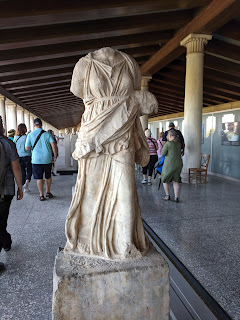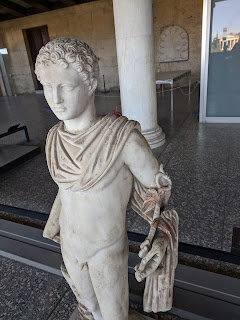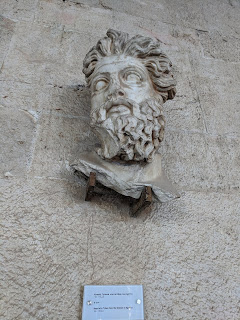Stoa of Atalus (King Atalus II of Pergamon)
Stoa is covered colonnade with shops at back that can be used for cult purposes or groups like modern day Rotary Club; Doric and ionic columns; broken, darker pieces are original (iron content causes orange hue aging), rest is reconstructed
Agora: market, included religion and politics
Pergamine Capital demonstrated it was a gift from Pergamon. Corinthian capital.
Saying: Rome conquered Greece but then Greek culture conquered Rome.
Untrimmed Olive tree
Cup found with "Simon" in bottom (like you would a coffee cup today), corroborates literary history about Socrates meeting with Simon the cobbler at the edge of the agora, Socrates killed for corrupting youth at edge of agora. Only 18+ men allowed
Paul similar thing at Aerepogus, spreading knowledge of God,
Bishop: Paul went to marketplace, we must go to bars and pizza places or wherever people are now to share the gospel
Bowl shape between agora and Temple, circle is symbol of equality, no heirarchy. Cradle of democracy, Round building as Center of City emphasizes equality, it was like their chamber of commerce
Hephaestion Temple, (Vulcan) best preserved from antiquity, metal working God
Apse/altar in East in churches.
When house fell down, they would bury and then build again, and so on; developing stratigraphy that gets reversed in excavation.







































Comments
Post a Comment